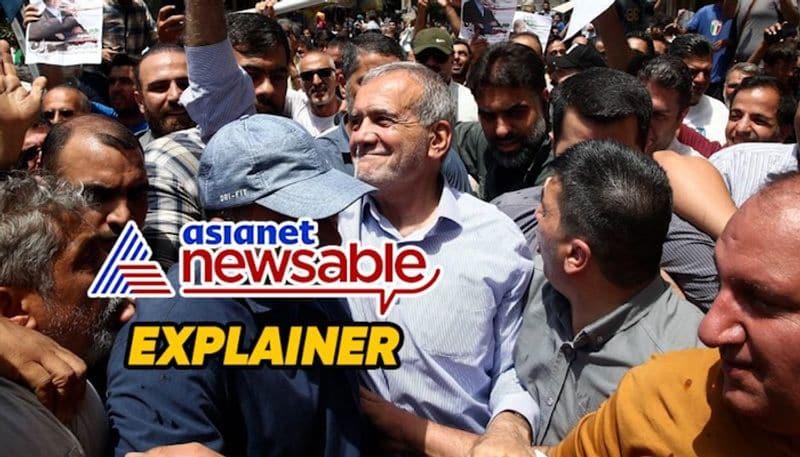
Echoes Of Khatami: Can Pezeshkian Reformist Agenda Reshape Indo-Iranian Relations?
The election in Iran took place more than a month after the unexpected death of hardliner President Ebrahim Raisi in a helicopter crash in May this year. At the end of the electoral event, the ballots were counted. In total, there were 97 votes cast. The results were:
- Reformist candidate Dr Masoud Pezeshkian: 61 votes Hardliner candidate Saeed Jalili: 28 votes Protest votes that reject both candidates: 8 void or blank votes
On Sunday morning, Iranians around the world learned that a significant change had occurred in their home country. Reformist candidate Dr Masoud Pezeshkian, a cardiac surgeon-turned-politician, had emerged victorious in the election. He received 16.3 million votes, surpassing his rival, Saeed Jalili, who garnered 13.5 million votes. This news was met with enthusiasm and hope among many Iranians, as they looked forward to the potential changes and reforms that Dr Pezeshkian's victory might bring to the country.
Modi Congratulates New President
Prime Minister Narendra Modi took to social media to congratulate Dr Pezeshkian on his election as the new president of Iran. In his message, Modi expressed his eagerness to work closely with the newly elected president to further strengthen the warm and long-standing relationship between India and Iran to the benefit of both countries and the wider region.
Modi's optimism on collaborating with the newly elected president from the reformist group stems from Delhi's positive past experiences working with reformists.
Iran's Power Structure Explained
It is important to understand that, in Iran's power structure, the President acts more like a deputy to supreme leader Ayatollah Ali Khamenei, who has the ultimate authority and makes the final decisions.
Profile of Dr Masoud Pezeshkian
- Dr Pezeshkian is a veteran of the Iran-Iraq war. He has served in the Iranian Parliament and as Health Minister. As an Azeri, part of one of Iran's ethnic minorities, Dr Pezeshkian received support from former President Mohammad Khatami Dr Pezeshkian is popular among young people and women voters and has a record of openly criticizing the government. He also spoke out against the violent response to protests following the 2022 death of Mahsa Amini, an Iranian Kurdish woman Dr Pezeshkian is willing to negotiate with the West about Iran's nuclear programme, seeing it as essential for the economy because US-led sanctions have harmed the country's financial situation
Milestones in India-Iran Relations
India and Iran signed a Treaty of Friendship on March 15, 1950. The relationship improved significantly when reformist President Khatami led Iran from 1997 to 2005.
Indian diplomats in Tehran and Delhi highlight former Prime Minister Atal Bihari Vajpayee's visit to Iran and the signing of the Tehran Declaration in April 2001, followed by President Khatami's visit to India and the signing of the New Delhi Declaration in 2003, as key moments for boosting India-Iran cooperation.
In 2003, President Khatami became the first Iranian president to be invited as the chief guest at India's Republic Day Parade.
Key Steps in India-Iran Partnership
India's involvement in developing the Chabahar port started in 2002 when Iran's former National Security Adviser Hassan Rouhani discussed the project with his Indian counterpart, Brajesh Mishra.
In January 2003, Khatami and Vajpayee signed a comprehensive roadmap for strategic cooperation, establishing the strategic vision for the India-Iran partnership.
The relationship has experienced several ups and downs since then. During hardliner President Mahmoud Ahmadinejad's term (2005-2013), India-Iran relations were strained by the Indo-US nuclear deal and sanctions on Iran's nuclear programme.
When US President Donald Trump pulled out of the Joint Comprehensive Plan of Action (JCPoA)-an agreement on the Iranian nuclear programme reached in Vienna on July 14, 2015, between Iran and the P5+1 (the 5 permanent members of the UN Security Council, the US, China, France, Russia and the UK, collectively known as the P5, plus Germany)-in 2018, sanctions were reimposed.
This forced India to stop purchasing oil from its long-time supplier, Iran. Although Chabahar port was exempt from these sanctions, progress on the project has slowed down. Hardline President Ebrahim Raisi (2021-2024) engaged in indirect talks with the Joe Biden Administration, but no significant progress was made.
India has adopted a wait-and-see approach, particularly with the possibility of Trump returning to the White House within the next six months. As a result, Delhi will proceed cautiously in its relations with Iran, which have been subdued in recent years.
(The author of this article is a Defence, Aerospace & Political Analyst based in Bengaluru. He is also Director of ADD Engineering Components, India, Pvt. Ltd, a subsidiary of ADD Engineering GmbH, Germany. You can reach him at: ...)
Legal Disclaimer:
MENAFN provides the
information “as is” without warranty of any kind. We do not accept
any responsibility or liability for the accuracy, content, images,
videos, licenses, completeness, legality, or reliability of the information
contained in this article. If you have any complaints or copyright
issues related to this article, kindly contact the provider above.

















Comments
No comment